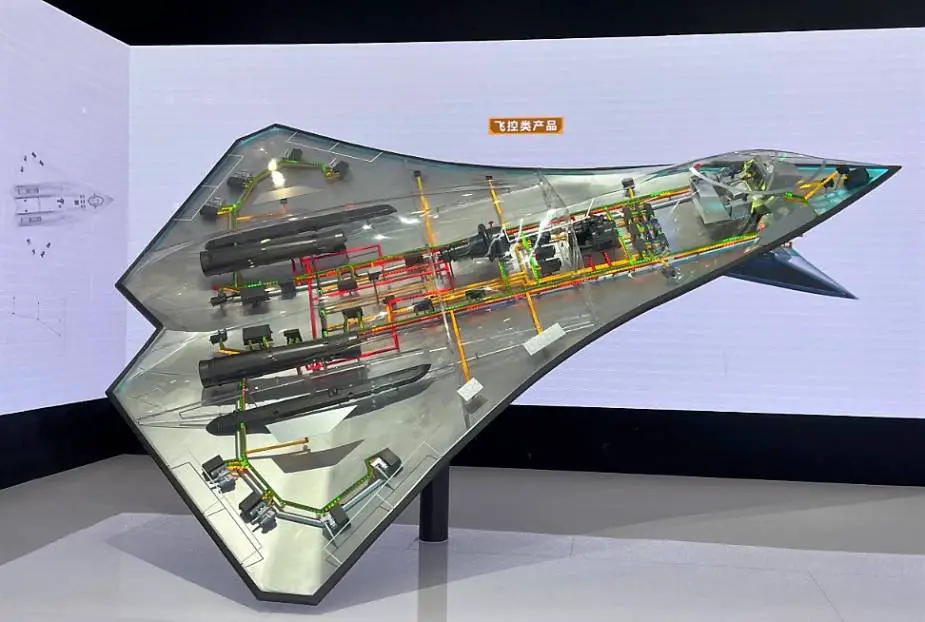Breaking news
AVIC from China reveals tailless concept for 6th-generation fighter jet.
A promotional video released by the Chinese aviation industry on February 1 featured computer-generated images showing what analysts said could represent a concept of the country’s next-generation fighter jet, Liu Xuanzun reports in Global Times.
Follow Air Recognition on Google News at this link
 A concept model of a next-generation fighter jet was displayed at Airshow China 2022 held in Zhuhai, South China’s Guangdong Province in November 2022. (Picture source: Liu Xuanzun/GT)
A concept model of a next-generation fighter jet was displayed at Airshow China 2022 held in Zhuhai, South China’s Guangdong Province in November 2022. (Picture source: Liu Xuanzun/GT)
The video, published in the WeChat video channel of the state-owned Aviation Industry Corporation of China (AVIC), featured a computer-generated clip showing three unknown aircraft flying in formation. These aircraft looked like the J-20 stealth fighter jet, but with no canards, tails or fins, and the diamond-shaped wings appeared bigger than those of the J-20, giving it what seems to be a blended wing-body configuration, observers said, who also speculated that it might be China’s next-generation fighter jet, Liu Xuanzun writes.
At the Airshow China 2022 held in Zhuhai, South China’s Guangdong Province in November 2022, AVIC put on display a concept model of a next-generation fighter jet, which also had a tailless design like the aircraft shown in the latest video (see picture here above).
A tailless design will give the next-generation, or the 6th-generation, fighter jet superior stealth capability in all directions than current 5th-generation ones, and a blended wing body design will provide higher lift, longer range and lower fuel consumption. However, without vertical tails, the new aircraft will lose out on maneuverability if it does not use other designs or technologies to compensate, like thrust vectoring control-capable engines and split brake rudders, or other innovative approaches, analysts said.
With the project named ‘Next Generation Air Dominance’, the US next-generation fighter jet might also use a tailless design, according to a computer-generated rendering by Lockheed Martin, US news website Defense News reported in September 2022, Liu Xuanzun writes.


























